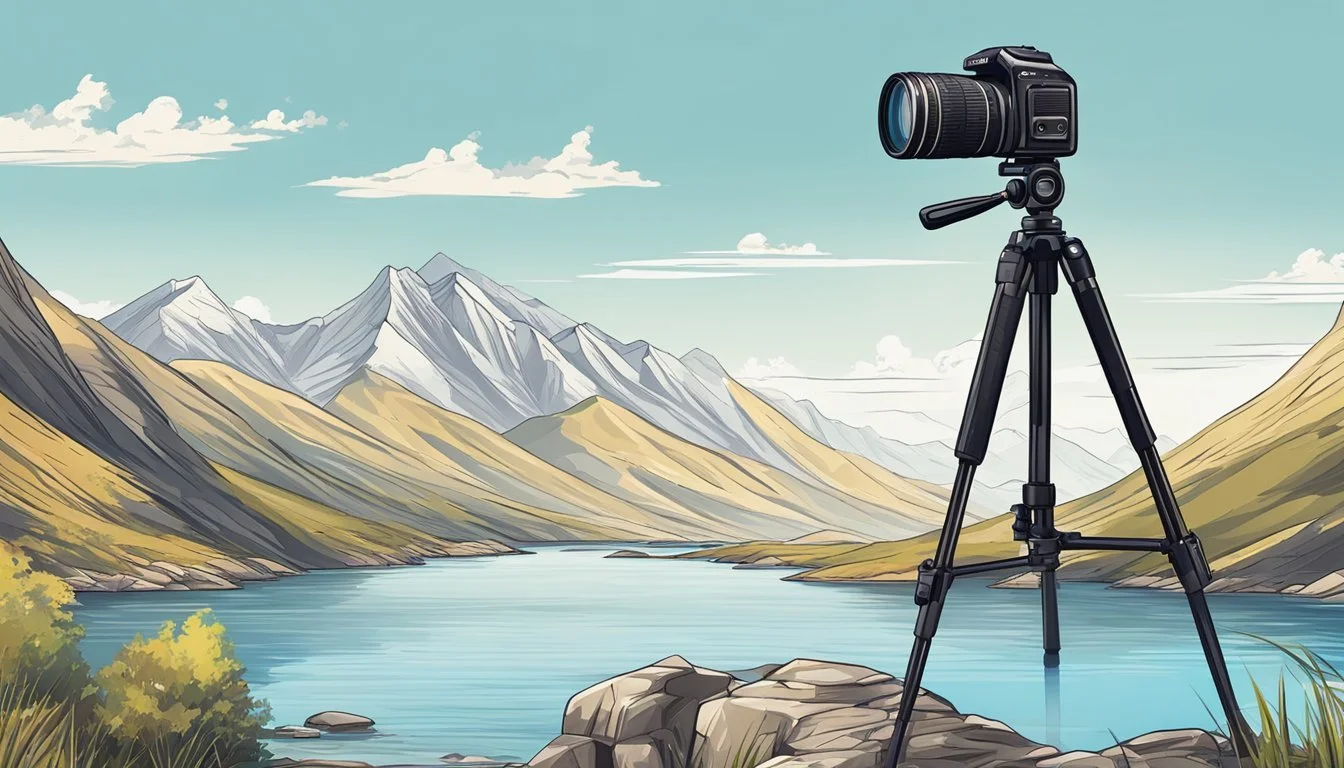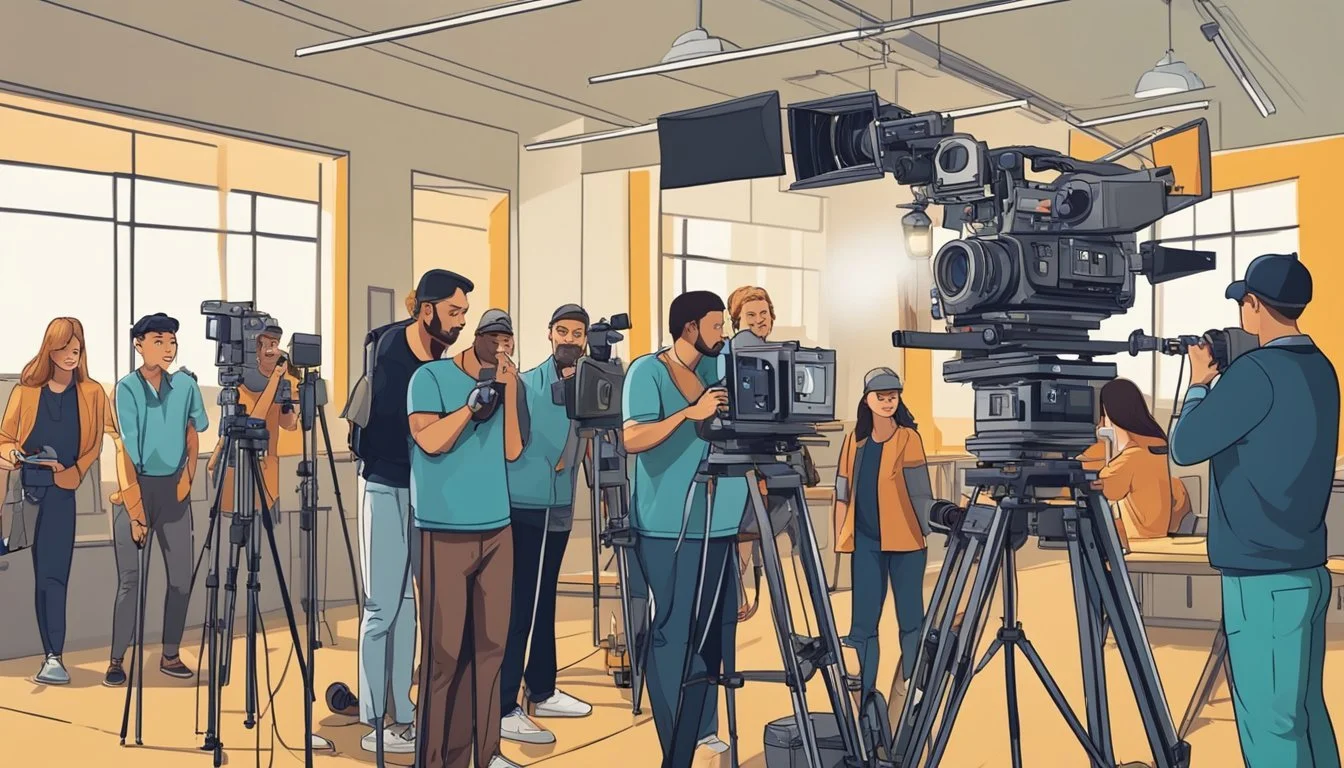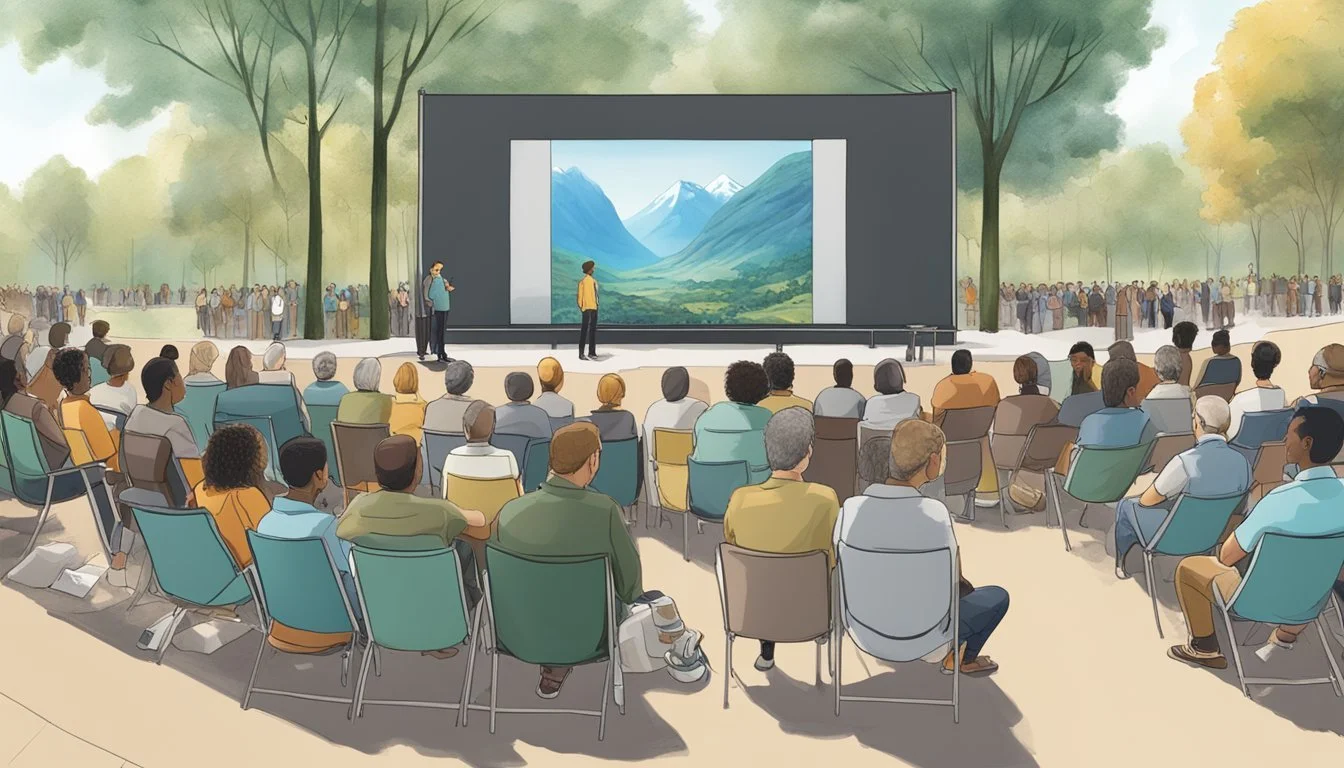Shocking Truths Unveiled: Top Documentaries That Will Change Your Life Forever!
Documentaries offer a unique window into real-world events, people, and ideas. These non-fiction films capture reality, educate viewers, and often spark important conversations. From social experiments to political exposés, the documentary genre encompasses a wide range of subjects and styles.
The best documentaries combine compelling storytelling with insightful analysis, leaving a lasting impact on audiences. They can challenge our perspectives, shed light on hidden truths, and inspire action. Critically acclaimed documentaries like "Citizenfour" and "Super Size Me" have not only garnered praise but also influenced public discourse on crucial issues.
Top-rated documentaries span various topics, including nature, history, sports, and the arts. Some focus on quirky competitions or cultural phenomena, while others tackle pressing social and environmental concerns. Regardless of subject matter, the most highly regarded documentaries share a commitment to authenticity and the power to engage viewers emotionally and intellectually.
Evolution of Documentary Filmmaking
Documentary filmmaking has undergone significant transformations since its inception. Pioneers pushed boundaries, technology reshaped production methods, and new styles emerged to captivate audiences.
Early Pioneers and Landmarks
Robert Flaherty's "Nanook of the North" (1922) marked a pivotal moment in documentary history. This groundbreaking film followed an Inuit family, blending staged scenes with genuine footage. It set a precedent for ethnographic documentaries.
In the 1920s, Soviet filmmaker Dziga Vertov developed the concept of "Kino-Pravda" (film truth). His experimental approach emphasized capturing life as it unfolded, without scripted elements.
John Grierson coined the term "documentary" in the 1930s. He established the British documentary movement, focusing on social issues and everyday life.
Technological Advancements and Styles
The 1960s saw the rise of cinéma vérité and direct cinema. Lightweight cameras and synchronous sound recording allowed filmmakers to capture events more spontaneously.
"Koyaanisqatsi" (1982) showcased innovative visual techniques. Director Godfrey Reggio used time-lapse photography and slow-motion to create a mesmerizing exploration of modern life.
Digital technology revolutionized documentary production in the 1990s and 2000s. Lower costs and easier editing made filmmaking more accessible to a wider range of creators.
The Essay Film and Propaganda
The essay film emerged as a reflective, often personal form of documentary. It blends factual content with subjective commentary, challenging traditional documentary conventions.
Leni Riefenstahl's "Triumph of the Will" (1935) remains a controversial landmark in propaganda filmmaking. Its innovative techniques glorified Nazi Germany, raising ethical questions about documentary's power to influence.
In contrast, wartime documentaries like "Why We Fight" series used the medium to boost morale and support Allied efforts during World War II.
Key Figures in Documentary Films
Documentary filmmaking has been shaped by visionary directors and compelling subjects. These individuals have pushed the boundaries of the genre and brought important stories to light.
Innovative Directors and Producers
Michael Moore revolutionized documentary filmmaking with his confrontational style. His works like "Bowling for Columbine" and "Fahrenheit 9/11" sparked intense debate on social issues. Errol Morris pioneered the use of dramatic reenactments in "The Thin Blue Line," helping to free an innocent man from death row.
Ken Burns redefined historical documentaries with his signature style of panning over archival photos. His epic series on the Civil War, Jazz, and Baseball captivated millions. Barbara Kopple won Oscars for "Harlan County, USA" and "American Dream," shedding light on labor struggles.
Impactful Personalities and Subjects
Claude Lanzmann's monumental "Shoah" provided a haunting record of Holocaust survivors' testimonies. The film's nine-hour runtime and absence of archival footage created an immersive experience.
Steve James captured the hopes and hardships of inner-city youth in "Hoop Dreams." The film followed two Chicago teenagers over five years as they pursued NBA dreams. Its intimate portrayal of urban life resonated deeply with audiences.
These documentarians and their subjects have expanded our understanding of the world. Their work continues to inspire new generations of filmmakers and viewers alike.
Themes and Subject Matter
Documentary films explore diverse themes and subjects, offering viewers unique insights into the world around us. They shed light on important issues, historical events, and cultural phenomena through compelling storytelling and visual narratives.
Socio-Political Commentaries
Documentaries often tackle pressing social and political issues. Films like "The Social Dilemma" examine the impact of technology on society, while others focus on civil rights movements and their lasting effects.
Some documentaries delve into American culture, exploring topics like voting rights, healthcare, and education reform. These films aim to spark dialogue and promote social change.
Political documentaries may cover election campaigns, government policies, or international conflicts. For example, films about ISIS have provided in-depth looks at the terrorist group's rise and its global impact.
Biographical and Historical Accounts
Many documentaries bring historical figures and events to life through archival footage, interviews, and expert analysis. These films offer valuable history lessons, providing context for current events.
Biographical documentaries profile influential individuals, from world leaders to artists and activists. They often reveal lesser-known aspects of their subjects' lives and legacies.
Historical documentaries can cover ancient civilizations, world wars, or more recent events like the Civil Rights Movement. These films help viewers understand how past events shape our present world.
Environmental and Cultural Explorations
Environmental documentaries highlight pressing ecological issues, from climate change to wildlife conservation. They often combine stunning visuals with scientific data to educate and inspire action.
Cultural exploration films offer glimpses into diverse societies and traditions around the globe. They may focus on indigenous communities, religious practices, or unique cultural phenomena.
Some documentaries examine the intersection of environment and culture, showing how communities adapt to changing landscapes or preserve traditional ways of life in the face of modernization.
These films often showcase remote locations or endangered habitats, raising awareness about the need for preservation and sustainable practices.
Acclaimed Documentary Films
Documentary films have the power to inform, inspire, and challenge viewers. They shed light on important issues and tell compelling true stories through a cinematic lens.
Groundbreaking and Award-Winning
"The Act of Killing" (2012) revolutionized the documentary genre with its surreal approach to examining Indonesian genocide. Director Joshua Oppenheimer invited former death squad leaders to reenact their crimes, resulting in a disturbing yet profound exploration of human nature.
"Bowling for Columbine" (2002) by Michael Moore tackled gun violence in America. The film won an Academy Award and sparked intense debates about firearms and culture.
"Fahrenheit 9/11" (2004), also by Moore, became the highest-grossing documentary of all time. It critically examined the Bush administration's actions after the September 11 attacks.
Culturally and Socially Influential
"13th" (2016) by Ava DuVernay explored the intersection of race, justice, and mass incarceration in the United States. The film drew connections between slavery and modern prison systems.
"Amy" (2015) offered an intimate look at the life and struggles of singer Amy Winehouse. It won the Oscar for Best Documentary Feature and humanized the late artist beyond tabloid headlines.
"For Sama" (2019) provided a harrowing first-person account of the Syrian conflict. Filmmaker Waad Al-Kateab documented five years of her life in Aleppo, offering a deeply personal perspective on war.
Contemporary Successes
"All the Beauty and the Bloodshed" (2022) by Laura Poitras chronicled artist Nan Goldin's fight against the Sackler family and the opioid crisis. The film won the Golden Lion at the Venice Film Festival.
"Four Daughters" (2023) blended documentary and fiction to tell the story of a Tunisian family affected by radicalization. Director Kaouther Ben Hania's innovative approach earned critical acclaim.
These recent documentaries demonstrate the genre's continued ability to tackle complex subjects and push artistic boundaries.
Documentary Production and Filmmaking
Documentary filmmaking combines artistic vision with real-world storytelling. It requires careful planning, ethical considerations, and technical expertise to capture authentic moments and craft compelling narratives.
The Filmmaking Process
Documentary production begins with research and development. Filmmakers identify compelling subjects, conduct interviews, and gather background information. Pre-production involves securing locations, equipment, and crew. During filming, directors must balance planned shots with capturing spontaneous events.
Cinematographers use a variety of techniques to create visually engaging footage. They may employ handheld cameras for an intimate feel or static shots for a more formal approach. Sound recordists capture clear audio in challenging environments.
Post-production is crucial in shaping the final narrative. Editors sift through hours of footage to construct a cohesive story. They may use archival material, graphics, or animation to supplement the filmed content. Sound design and music enhance the emotional impact.
Challenges and Ethical Considerations
Documentary filmmakers face unique challenges. They must gain trust and access to their subjects while maintaining objectivity. Unexpected events can derail shooting schedules, requiring flexibility and quick decision-making.
Ethical considerations are paramount. Filmmakers must obtain informed consent from participants and consider the potential impact of their work. They grapple with questions of representation and the responsibility to present truthful accounts.
Balancing artistic vision with factual accuracy is an ongoing challenge. While some documentaries lean towards essay films, exploring subjective perspectives, others strive for journalistic neutrality. Filmmakers must be aware of the fine line between documentation and propaganda.
Funding can be a significant hurdle. Many documentaries rely on grants, crowdfunding, or personal investment. This financial pressure can influence creative decisions and potentially compromise editorial independence.
Distribution and Accessibility
Documentary distribution has expanded beyond traditional channels to embrace digital platforms. This shift has increased global reach while also raising important questions about accessibility for diverse audiences.
Traditional and Digital Platforms
Theatrical releases remain an important avenue for high-profile documentaries, especially those aiming for awards consideration. Film festivals provide crucial exposure and networking opportunities. Television networks, both public and cable, continue to be major distributors of documentary content.
Digital platforms have revolutionized distribution. Streaming services like Amazon Prime offer documentaries to wide audiences. Video-on-demand and pay-per-view models allow viewers to access content easily. Some filmmakers opt for free-to-watch platforms to maximize reach, particularly for advocacy-focused documentaries.
International Markets and Festivals
Documentary filmmakers increasingly target international markets to expand their audience and revenue potential. Subtitling and dubbing make content accessible across language barriers.
Major film festivals like Sundance and Toronto International Film Festival showcase documentaries to global audiences and industry professionals. Niche festivals focused on specific topics or regions provide targeted exposure.
International co-productions have become more common, allowing filmmakers to tap into funding and distribution networks in multiple countries. This approach can lead to wider distribution and cultural exchange.
Influences on Culture and Society
Documentaries wield significant power to shape cultural narratives and societal perspectives. They illuminate pressing issues, challenge preconceptions, and inspire action among viewers across diverse demographics.
Documentaries as Tools for Change
Impactful documentaries serve as catalysts for social and political transformation. "An Inconvenient Truth" (2006) brought climate change to the forefront of public discourse, earning an Academy Award and sparking global environmental initiatives. The film's use of scientific data and compelling visuals educated millions on the urgency of addressing global warming.
"The Social Dilemma" (2020) exposed the hidden influences of social media on society. It prompted users to reassess their digital habits and pushed for greater platform accountability. The documentary's revelations about addiction-driven algorithms and data manipulation sparked debates on tech ethics and privacy.
Educational Impact
Documentaries function as powerful educational tools, offering in-depth explorations of complex subjects. They provide viewers with new perspectives on cultures, historical events, and scientific discoveries. Films like "The Cove" (2009) raised awareness about dolphin hunting in Japan, leading to a significant decrease in the practice.
Comedy documentaries, while entertaining, also educate audiences on social issues through humor. They tackle serious topics in accessible ways, encouraging critical thinking and empathy. Some documentaries focus on health issues like dementia, increasing public understanding and support for affected individuals and their families.





